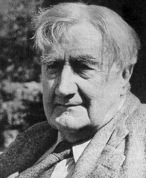 One of the threads of this year’s Proms is a survey of the works of Ralph Vaughan Williams in commemoration of the fiftieth anniversary of his death. On August 26, which was the actual date of his death, the survey climaxed with an all-Vaughan Williams concert by the BBC Symphony, conducted by Sir Andrew Davis. The first work on the concert, the justly celebrated Fantasia on a Theme of Thomas Tallis; its performance, although maybe not exactly peremptory, was certainly restrained and cool, rather than as impassioned as one might have wished it to be. It was followed by the ballet score Job, with whose performance one could not argue. My own feeling about Job is that even though there is much very beautiful music in it, it is a little looser in construction and maybe a little more general in expression that the tightly constructed and closely argued symphonies, and that this is a, for lack of a better word, weakness in the piece.
One of the threads of this year’s Proms is a survey of the works of Ralph Vaughan Williams in commemoration of the fiftieth anniversary of his death. On August 26, which was the actual date of his death, the survey climaxed with an all-Vaughan Williams concert by the BBC Symphony, conducted by Sir Andrew Davis. The first work on the concert, the justly celebrated Fantasia on a Theme of Thomas Tallis; its performance, although maybe not exactly peremptory, was certainly restrained and cool, rather than as impassioned as one might have wished it to be. It was followed by the ballet score Job, with whose performance one could not argue. My own feeling about Job is that even though there is much very beautiful music in it, it is a little looser in construction and maybe a little more general in expression that the tightly constructed and closely argued symphonies, and that this is a, for lack of a better word, weakness in the piece.
The second half of the concert consisted of Serenade to Music, a short work setting an excerpt from The Merchant of Venice written to celebrate the fiftieth anniversary of the conducting career of Henry Wood, the founder of the Proms, and the Ninth Symphony. Serenade to Music was performed, as it was originally intended, by sixteen singers. It seems to me to be a just about perfect piece, and the performance was beautiful. The Ninth Symphony is a remarkable work. It holds a place in Vaughan Williams output somewhat analogous to that of the Requiem Canticles in Stravinsky’s; procedures and material from all earlier periods of his career appear, but both refined and, due to their different contexts, transformed into something new but with enormous added depth and expressive resonance. Each of the movements is the product of an extraordinarily original concept. In the first sonata form movement, a tune played by the clarinet accompanied by the harp, followed by a short trio for the clarinets, introduces the second theme; at the beginning of the recapitulation the clarinet tune returns played by the violin, leading directly to the second theme with a descant added on the flugel horn. From that point the events of the recapitulation proceeds in reverse order to that of the exposition, ending with the music for three saxophones that began the movement. In the second movement a solo line is alternated with a sort of court march which causes the line to fray and proliferate parts, leading to lyrical music for the full orchestra. The third movement is almost a mini-concerto for the saxophones, starting with perky soloistic lines accompanied by the snare drum and other percussion; that music develops into a fugue which is followed by a chorale that accelerates into very lively cascading music in close harmony that could have come from Duke Ellington and then dissolves, leaving only the ghosts of the accompaniment on the snare drum. The last movement is a complex two part form which begins quietly and contrapuntally and become a passacaglia somewhat like the last movement of the Fifth Symphony, but with more intensity. The whole work has a quality of intense urgency. (more…)
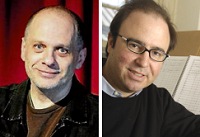 Big Ups to David Lang and Christopher Theofanidis who have just been appointed to the faculty of the Yale School of Music. They will teach graduate students in the school’s composition program as well as teach courses and participate in the performances of their works. Both earned masters and DMA degrees from the Yale School of Music before embarking on their illustrious careers.
Big Ups to David Lang and Christopher Theofanidis who have just been appointed to the faculty of the Yale School of Music. They will teach graduate students in the school’s composition program as well as teach courses and participate in the performances of their works. Both earned masters and DMA degrees from the Yale School of Music before embarking on their illustrious careers.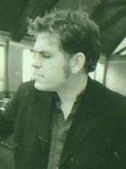 It’s been three years since the human and moral disaster that was Hurricane Katrina overran New Orleans and uncovered an ugly blight on America’s soul. To help make sure that nobody forgets, New Amsterdam Records will release a digital version of Ted Hearne’s powerful work Katrina Ballads on August 29.
It’s been three years since the human and moral disaster that was Hurricane Katrina overran New Orleans and uncovered an ugly blight on America’s soul. To help make sure that nobody forgets, New Amsterdam Records will release a digital version of Ted Hearne’s powerful work Katrina Ballads on August 29. Among the focuses of the Proms this summer are the centennials of Elliott Carter and Olivier Messiaen and the eightieth birthday of Karlheinz Stockhausen (due to his death in 2007, the celebration of his birthday was fused with a commemoration of his life’s work). Although the first night concert included the first performance of a Proms commission from Carter, the piano piece Caténaires, he is only represented by three other works, the Oboe Concerto, Night Fantasies, and Soundings, as opposed to eighteen works of Messiaen, several of them, including the opera St. Francis of Assisi, to be played on September 7, major works of considerable length. The Stockhausen celebration included a Stockhausen day on August 2, which included performances of Gruppen and Stimmung, among other pieces, as well as a performance of Punkte on August 22, which was his actual birthday.
Among the focuses of the Proms this summer are the centennials of Elliott Carter and Olivier Messiaen and the eightieth birthday of Karlheinz Stockhausen (due to his death in 2007, the celebration of his birthday was fused with a commemoration of his life’s work). Although the first night concert included the first performance of a Proms commission from Carter, the piano piece Caténaires, he is only represented by three other works, the Oboe Concerto, Night Fantasies, and Soundings, as opposed to eighteen works of Messiaen, several of them, including the opera St. Francis of Assisi, to be played on September 7, major works of considerable length. The Stockhausen celebration included a Stockhausen day on August 2, which included performances of Gruppen and Stimmung, among other pieces, as well as a performance of Punkte on August 22, which was his actual birthday.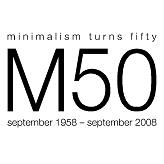
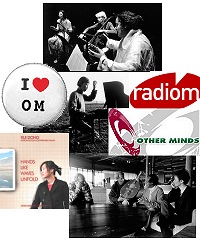 Lazy, hazy summer days… Not much really happening, unless you hoof it to some festival or other… Or, for the price of simply wearing out your finger clicking, you could spend the better part of the next couple weeks feasting on the treasure trove that is the
Lazy, hazy summer days… Not much really happening, unless you hoof it to some festival or other… Or, for the price of simply wearing out your finger clicking, you could spend the better part of the next couple weeks feasting on the treasure trove that is the 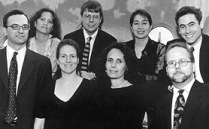 Dear Friends,
Dear Friends, Michael Berkeley’s Slow Dawn is a revision and reorchestration of a work written three years ago for wind band, which had been commissioned by the British conductor and horn player Tim Reynish as a memorial piece for his son William. Berkeley intended it as a depiction of dawn in Wales where he lives, and follows the deliberate and inexorable tread of the sun from the first hints of light through its early appearance with to its full presence with stabbing rays of daylight. This sunrise is a long way from Daphnis and Chloe (or, for that matter, from Sibelius’s Night Ride and Sunrise, which preceded this piece on this program). Here the focus is on the tread of ‘the kind old sun’ (as Berkeley says, quoting Wilfred Owen) in its endless recurrence and its complete disregard for more transient human concerns. Starting with deliberate slow dirge rhythm in the percussion, which recurs periodically over the its course, the tonalish work builds, via lines which are increasingly quicker and more agitated, over a dense, very closely spaced harmonic texture to a violently rhythmic climax; it leaves a dramatic and satisfying impression.
Michael Berkeley’s Slow Dawn is a revision and reorchestration of a work written three years ago for wind band, which had been commissioned by the British conductor and horn player Tim Reynish as a memorial piece for his son William. Berkeley intended it as a depiction of dawn in Wales where he lives, and follows the deliberate and inexorable tread of the sun from the first hints of light through its early appearance with to its full presence with stabbing rays of daylight. This sunrise is a long way from Daphnis and Chloe (or, for that matter, from Sibelius’s Night Ride and Sunrise, which preceded this piece on this program). Here the focus is on the tread of ‘the kind old sun’ (as Berkeley says, quoting Wilfred Owen) in its endless recurrence and its complete disregard for more transient human concerns. Starting with deliberate slow dirge rhythm in the percussion, which recurs periodically over the its course, the tonalish work builds, via lines which are increasingly quicker and more agitated, over a dense, very closely spaced harmonic texture to a violently rhythmic climax; it leaves a dramatic and satisfying impression.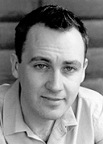 Gaudete by Scottish composer Stuart MacRae is an almost half hour long piece for soprano and large orchestra, setting poems from the book of the same name by Ted Hughes. The piece begins with very arresting ferociously clattering music for the full orchestra which gradually clears to reveal the soprano singing stratospherically high without words. All of this is very effective and it all lands with something of a thud as soon as attention is turned to words, when the voice part, along with everything else, becomes labored and constricted, in terms of both rhythm and tempo.
Gaudete by Scottish composer Stuart MacRae is an almost half hour long piece for soprano and large orchestra, setting poems from the book of the same name by Ted Hughes. The piece begins with very arresting ferociously clattering music for the full orchestra which gradually clears to reveal the soprano singing stratospherically high without words. All of this is very effective and it all lands with something of a thud as soon as attention is turned to words, when the voice part, along with everything else, becomes labored and constricted, in terms of both rhythm and tempo.
 Here’s a big loss to the New York new music community.
Here’s a big loss to the New York new music community.